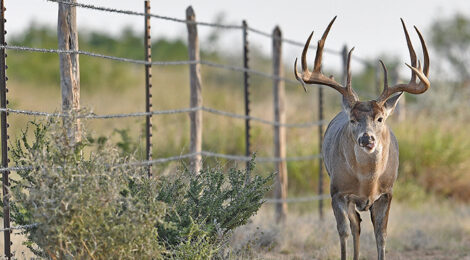
ASSESSING A DEER HERDS’ CONDITION
In order to become a better hunter, one must hunt smarter, not harder. Here are some insight and tips.
Story and photography by Bob Zaiglin
Now that deer hunting season has arrived, some 740,000 Texas hunters will enter the state’s wildlands in pursuit of the most well distributed and popular big-game animal on the continent — whitetail deer. Although those older bucks exhibiting large racks will attract most of the attention, some hunters are simply interested in replenishing their supply of tasty and nutritious venison. But whether it’s a trophy-racked buck or a nice-sized doe they’re after, all sportsmen are interested in how well deer fared during the extensive drought and heat wave Texas has experienced over the last couple of years.
In order to address the present state of the deer herd, it’s vital to understand that Texas is a huge state, stretching 790 miles north to south and 660 miles east to west, entailing 268,597 square miles, or 171,902,080 acres. Encompassing an expanse of this magnitude, it can be snowing in the Panhandle while hot and dry on the Rio Grande Plains, thus I will focus primarily on conditions in the South Texas brush country and the Hill Country, often referred to as the breadbasket region for deer.
Unquestionably, the paramount factor that impacts the habitat that deer depend upon is not only the amount, but timing of rainfall. That’s because following every rain shower, the resilient vegetative community responds in a robust way, yielding substantial amounts of regrowth, which equates to deer forage, especially on areas occupied by vegetation not only preferred by deer, but imperative to their survival.
************************************************************************
To read more, click here to SUBSCRIBE








